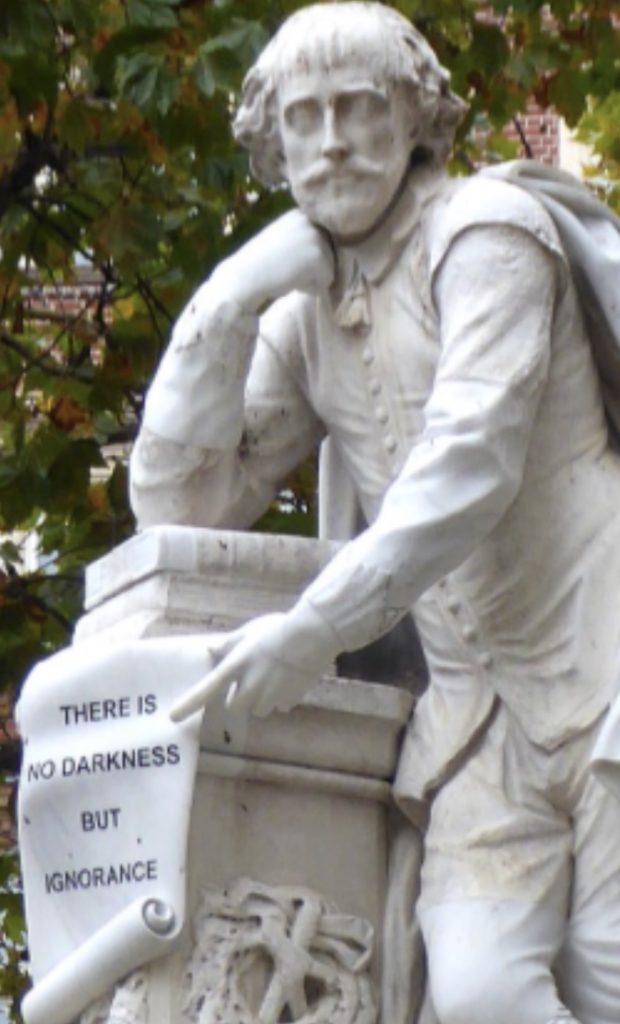I have walked through Leicester Square in London many times over the years.
I lived in London for a time in the 1970s when I worked as a reporter for the Evening News and I’ve been a frequent visitor to London since I came to live in Canada.
This summer, I again walked through the square, this time with my 12-year-old granddaughter, Maya.
And we stopped to take photographs at the Shakespeare statue and fountain on the right side of the square.

For the first time, I looked more closely at the words the figure of Shakespeare is pointing to: “There is no darkness but ignorance.”
The words come from a conversation between the Fool and Malvolio in Twelfth Night that in part involves an argument over whether they believe in Pythagora’s idea about the power of the soul to transmigrate into the body of a bird, such as a sandpiper. The Fool thinks it is quite believable, Malvolio does not.
It is the Fool who first says “there is no darkness but ignorance.”
Now, I must confess to being a big fan of Archy and Mehitabel, the wonderful poetic work by Don Marquis, in which the soul of a poet transmigrates into the body of a cockroach.
It’s an hilarious work, full of clever insights and marvellous poetic situations. I have given this book as a gift more than once and only recently to my son after I found a copy in excellent condition in a used book shop a few weeks ago.
Yet I am still a firm believer – probably due to my Church of England upbringing – in the idea of “one life, one death, then comes judgment.”
In other words, the idea of the transmigration is not deep in my consciousness. And I say this, too, having been to India and returned with a deep respect, even admiration and appreciation, for Hindu culture and its notions of recycled existences, but I still cannot go along with the core idea of reincarnation, let alone transmigration.
However, Shakespeare’s words on the statue in Leicester Square did hit home in a new way this summer because the words “darkness” and “ignorance” have come to mean so much more in light of terrorism and the grim reality of all other forms of social violence and negative attitudes, especially towards women.
The Shakespeare statue, which was put up in 1874, offered a new perspective and freshness of meaning, so I was moved and found it entirely current and appropriate.
The significance of making this discovery while with my granddaughter, who is a new and developing soul in the world with new ideas and new eyes on the world, was also not lost on me.
I’m glad to have made this discovery, albeit late in life, and grateful to Shakespeare, yet again, for pointing me to words I can live by, even if it means keeping an open mind to the possibility that perhaps the soul of an ancestor could indeed inhabit . . . a sandpiper.
Although I doubt it.

















